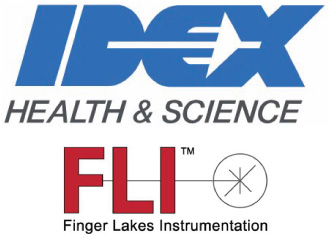| Total Integration Time | |||
| Standard Start (Row 0) |
Immediate Global Exposure Start (Anywhere in row space) |
||
| LDR | HDR | LDR | HDR |
| (0 - 21msec) + Exposure Time |
(0 - 42msec) + Exposure Time |
(0 - 10.26 usec) + Exposure Time + [21msec*(#rows/2048)] |
(0 - 20.52 usec) + Exposure Time + [42msec*(#rows/2048)] |
The drawback to the standard start, at row 0, is the variable amount of time between the trigger command and
exposure start. If you are taking short exposure images, this variable amount of time from trigger to exposure
start can, relatively speaking, have a large impact on the image.
The advantage of the Immediate Global Exposure start option is the reduction of variability in the time between
trigger and exposure compared to the default trigger option. The drawback to an immediate trigger is that the
imaging starts at any row, and due to the characteristics of a rolling shutter imager, any motion during exposure
will produce a discontinuity in the image. This flaw is produced by a large gap in time between the initial rows
exposure beginning and the final rows exposure beginning. As the beginning and end meet somewhere in the
middle of the image, the time differential between the first and last row read will produce an unpleasing image.
This mode is best used when the scene is dark, allowing as little incident light in prior to the event as possible.
The goal of this is to make the exposure before and after the event insignificant to the final image.

Trigger Settings
Several types of trigger control commands are available.
All trigger commands are executed after the Exposure
Delay Time has expired, if a non-zero value was entered.
Internal
This method uses the software application to issue a trigger request immediately when a capture is requested.
This internal trigger is communicated over the USB 3.0 connection or Adnaco Optical Fiber connection. These
connections introduce a small amount of delay. There is also a fixed delay in the camera for the internal trigger
to be communicated to the sensor controller.
External High to Low and External Low to High
This method configures the sensor to respond to an external trigger. This input is delivered via the 8-pin
connector, on pin 3. When an external trigger is selected and image capture is requested, the camera waits for
the transition of the external pin to start the exposure. If "External High to Low" is selected, the exposure will
begin when the voltage on pin 3 transitions from high to low. If "External Low to High" is selected, the exposure
will begin when pin 3 transitions from low to high.
External Control H to L and External Control L to H
In these modes of operation, the level of the externally supplied trigger signal controls the start of the image
exposure and the end of the exposure. For Control H (high) to L (low), the image exposure starts when the
external trigger input transitions from a high state to a low state and ends when the external trigger input
transitions from a low state to a high state. For Control L (low) to H (high), the image exposure starts when the
external trigger transitions from low to high, and the exposure ends when the input transitions from high to low.
The exposure value set in Exposure is the maximum allowed exposure, so, even if the external trigger signal is
still active, the exposure will end when the set exposure time is reached. Therefore, ensure that the exposure
time set in Exposure is greater than the exposure duration you intend to conduct.
Start Option
When a trigger is commanded (internally or externally) the sensor may be at any point in its continuous loop of
resetting rows in the image row space. The image row space is defined as a row in the whole image (row
0-2047) or a row in a defined region of interest (ROI).
The default start option begins exposure at the same spot in the image, that is, the lowest row in the image row
space. The trigger is held until the first row (lowest row) in the image space is reset, at which point the image
exposure begins. Exposure ends at the highest row in the row space.
With the Immediate Global Exposure start option, the row reset ends immediately and the requested exposure
readout begins with the row following the last row reset. The first row of imagery exposed by the sensor can be
any row in the image row space. The last row of imagery similarly can be any row.

Finger Lakes Instrumentation, a division of IDEX Health & Science
1250 Rochester St.
Lima, New York 14485
1250 Rochester St.
Lima, New York 14485
Phone: 585-624-3760
Email: IHSKeplerSupport@IdexCorp.com
Web: www.flicamera.com
Email: IHSKeplerSupport@IdexCorp.com
Web: www.flicamera.com
©2023 IDEX Health & Science
